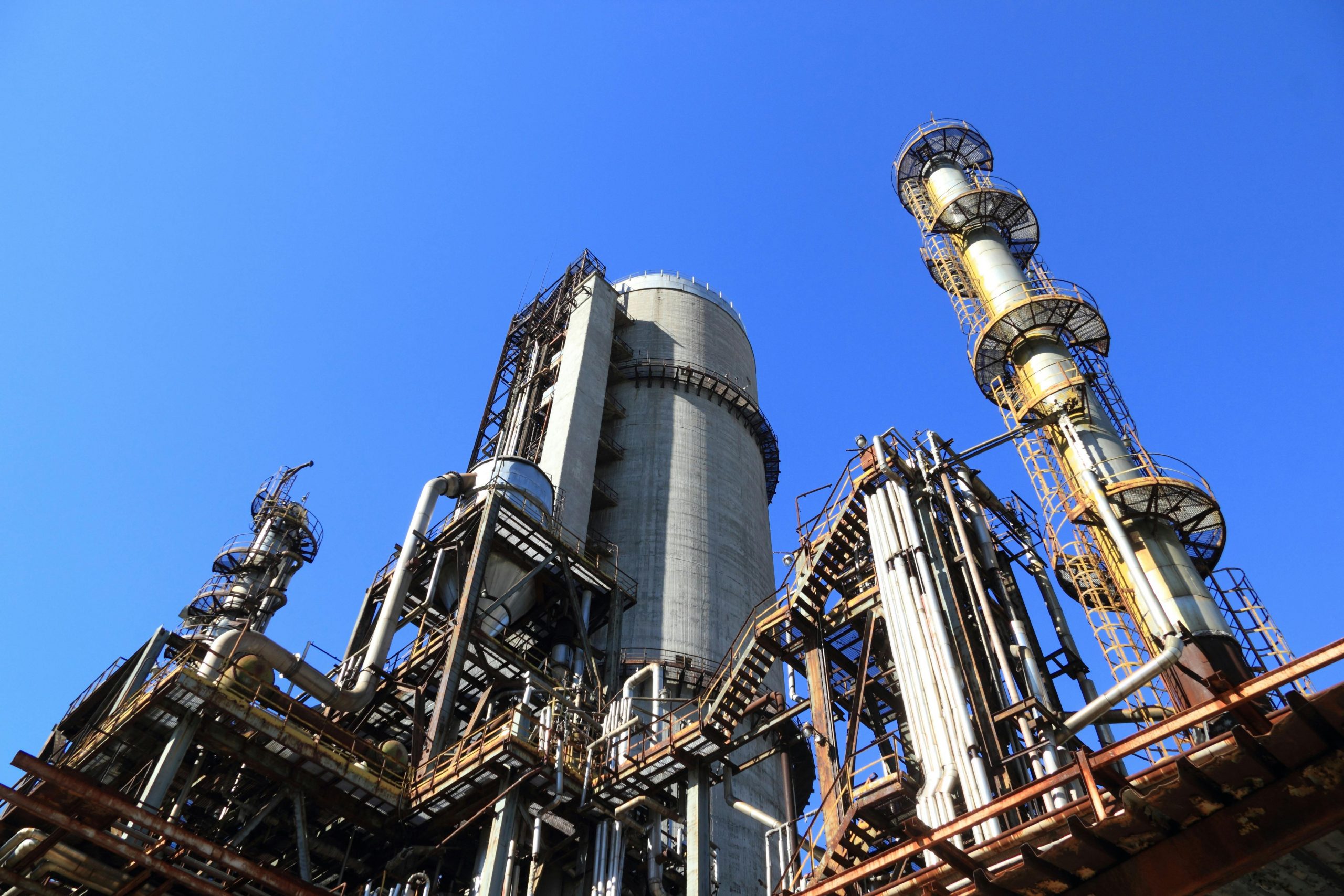Big Data in Oil and Gas
Market Growth and Adoption of Big Data in Oil & Gas
Nowadays, big data lies at the center of this digitization. The integration of big data analytics has been one of the major interests of companies in the oil and gas industries in their striving for operations optimization and efficiency. With increasing advancement in technology and development of insight-driven decision making, the industry reports state that big data in oil and gas industry is likely to reach incredibly astonishing figures in the following years.
This growth is not just about numbers. From dependence on traditional ways, the industry has now moved to data as a strategic asset. Companies are investing in state-of-the-art technologies to collect, store, and analyze huge amounts of data from drilling rigs, sensors, and even market reports. This evolution is, in turn, allowing organizations to respond more quickly to market changes, gain operational efficiencies, and ultimately improve the bottom line.
 Check out our data analytics services company for more.
Check out our data analytics services company for more.
Why Big Data Analytics is a Priority for Top Oil & Gas Companies
Big data analytics in the oil and gas industry is an absolute necessity for top oil and gas companies. The challenges facing the industry today, including volatile oil prices, regulatory pressures, and environmental concerns, demand that companies leverage big data analytics oil and gas to stay competitive. When every decision can have significant financial implications, insights derived from data can mean the difference between success and failure.
By placing a premium data analytics in the oil and gas industry, these companies stand to gain in manifold ways, some of the key value propositions of which could be listed below:
- Better Decision Making: Data-driven insights facilitate informed decisions that are contemporary rather than intuitively based or historic.
- Cost Efficiency: Analytics in oil and gas enables the company to find operational inefficiencies, thereby saving lots of costs.
- Risk Management: Predictive analytics can help in identifying risks before they increase so that companies can take proper measures in advance.
- Innovation: Big data oil gas inspires a culture of innovation that motivates teams to explore new ideas and fresh approaches to traditional challenges.
Overview of Big Data Analytics for Oil & Gas
Big data analytics for oil and gas involves various methodologies that will transform raw data into actionable insights. Here is a closer look at some of the key types of analytics applied in the oil and gas sector:
Descriptive Analytics for Insightful Reporting
Descriptive analytics provides a snapshot of past performance. Companies can develop various insightful reports showing trends and patterns by analyzing historical data. For example, a company might analyze drilling data to identify which sites produced the highest yields, informing future exploration. This kind of analysis provides a clear view of what has happened and also lays the foundation for deeper investigations. Leading energy companies are using descriptive analytics to derive insight from their data and make better decisions. ExxonMobil uses it to analyze historical drilling data and production metrics to identify trends in oil yield by region. BP uses descriptive analytics to create reports that summarize performance metrics, enabling stakeholders to visualize production trends over time. Similarly, Chevron applies descriptive analytics to past performance data to inform future strategies on where to explore, indicating the best sites for drilling. These practices show how descriptive analytics is important in optimizing operations and informing strategic decisions within the energy sector.
Diagnostic Analytics for Problem-Finding
While descriptive analytics tells us what happened, diagnostic analytics seeks to understand why it happened. This involves digging deeper into the data to identify the root causes of issues. For example, if production levels drop unexpectedly, diagnostic analytics can help pinpoint whether equipment failures, supply chain disruptions, or external factors are to blame. This insight allows companies to address problems effectively and implement corrective measures. Shell uses diagnostic analytics to investigate unexpected drops in production, identifying root causes such as equipment failures or supply chain disruptions that enable rapid and effective problem resolution. TotalEnergies applies diagnostic analytics to assess operational data to identify production process inefficiencies and failures that drive further improvements. Similarly, ConocoPhillips uses diagnostic tools that help analyze production data for understanding disparities and thus applying corrective measures to enhance efficiency. These applications show the power of diagnostic analytics in optimizing energy sector operations.
Predictive analytics for the future planning
Predictive analytics goes one step further in that it foretells future trends, using statistical algorithms and techniques of machine learning. Therefore, data analytics in oil and gas, it includes forecasting equipment failure, market demand changes, and exploration success rate. With the anticipation of what the future might be, companies can make proactive decisions in tandem with their strategic objectives.
Prescriptive Analytics: Optimize Your Decisions
Prescriptive analytics goes beyond prediction to recommend concrete actions based on predictive insights that could enable organizations to optimize operations in real time. If, for example, business analytics predict that some equipment in oil and gas is likely to fail soon, prescriptive analytics will recommend the best time for its maintenance, thus minimizing downtime and maximizing efficiency.
 Big data analytics for oil and gas companies
Big data analytics for oil and gas companies
Core Elements of Big Data in Oil and Gas
To effectively leverage big data in oil and gas industry, companies have to focus on several core elements:
Efficient Data Collection and Integration
In summary, the effective collection of data is an important precondition for analytics in oil and gas, comprising information from diversified sources: sensors of drilling rigs, market reports, geological studies, and putting this into some kind of unified system. The ones doing the oil and gas data analysis well can provide them with an all-around vision of what they are doing to make better decisions.
Scalable Data Storage Solutions
This is where scalable storage solutions, such as cloud computing, become so crucial in light of the volumes of data that keep growing. The cloud enables companies to store high quantities of data without losing their accessibility.
Advanced Data Processing Tools
Robust data processing tools are needed to efficiently manage large datasets. With technologies like Hadoop and Spark, data can be processed at speed, enabling fast data analysis. Companies can have insights into their data almost instantly. These tools also ensure that data is transformed into information.
State-of-the-Art Analytical Techniques
The analysis of complex datasets is possible through machine learning and artificial intelligence. Techniques based on these two are applied to make many regular activities automatic and identify patterns, which may be invisible to other conventional analysis techniques.
Interactive Visualization Tools
Interactive visualization tools have the ability to make data comprehensible. They allow stakeholders to interpret data easily and make decisions from visualizations. Such tools transform complex data into intuitive dashboards that enable fast analysis.
Robust Data Security and Governance
Data security and governance become of the essence in the oil and gas industry, given that data are sensitive. This calls for the implementation of tight policies to protect sensitive information and maintain industry regulations. It involves instituting access controls, regular audits in systems, and ensuring that data are safely stored.
 Oil and gas companies
Oil and gas companies
Key Benefits of Big Data in Oil & Gas
The advantages of big data analytics in the oil and gas industry are numerous and far-reaching:
Accuracy in Exploration Activities
Big data analytics in oil and gas industry makes exploration activities more accurate by processing the geological data. This improves the accuracy of pinpointing prospective reserves, reducing the possibility of expensive drilling failure.
Maximizing Production Output
Data analytics in the oil and gas industry will optimize production processes that enable companies to maximize output while minimizing costs and resource use. Companies can find out how to streamline operations and boost productivity by locating inefficiencies and bottlenecks.
Safety Measures
Analytics of data can be used to promote safety with finding out potential risks and taking necessary actions proactively. For example, using historical safety data analysis for understanding accident trends helps in designing targeted safety training and improvements of equipment.
Improved Drilling Operations
Big data analytics in the oil and gas industry smoothen the drilling operations through reducing downtimes and improving efficiency through constant monitoring of real-time data. The continuous evaluation of the drilling data allows the companies to make quick changes for the best performance.
Insight for Better Decision-Making
Access to accurate and timely data empowers decision-makers in making informed choices that determine business success. With the access of data insights, leaders can effectively respond to changing market conditions or operational challenges.
Sustainable Environmental Management
Big Data analytics in oil and gas aid in environmental monitoring, helping companies manage and comply with regulatory standards set for their impact. Therefore, by analyzing the trends in environmental data, companies can adopt strategies that minimize their ecological footprint.
 Applications of big data in oil and gas companies
Applications of big data in oil and gas companies
Big Data Applications in Oil and Gas
Various applications of big data in the oil and gas industry, which are changing the sector:
Optimizing Exploration and Drilling Process
Analytics tools can optimize the strategy of exploration and drilling techniques, hence reducing costs while increasing success rates. Companies have started making data-driven decisions as to where to drill using geological and historical data.
Gain in Production Efficiency
With real-time monitoring, data enables the scope of adjustments to enhance production. Problems that are likely to slow down the process are highlighted easily and therefore quickly adjusted. This has resulted in higher output at minimal costs.
Streamlining Supply Chain Operations
Data analytics oil and gas industry facilitates better management in the supply chain through insightful inventory levels, performance by a supplier, and demand forecasts, hence easier operations and no delays.
How HSE Compliance is Achieved
HSE compliance is one of the primary concerns in every oil and gas company due to strict regulations. Big data helps them track compliance metrics and identify opportunities for improvement with the intent to meet regulatory compliance.
Effective Reservoir Management
Data analytics enhance reservoir management by providing insights to optimize extraction techniques and improve resource recovery. Companies can make informed decisions on how to maximize output by analyzing the data of the reservoirs.
Energy Consumption Optimization
Big data helps organizations track and reduce energy consumption, hence cutting costs and achieving sustainability. Through the analysis of the pattern of energy usage, organizations can apply strategies to minimize waste.
 Trends of big data in 2025
Trends of big data in 2025
Emerging Trends in Oil and Gas Big Data
A few trends represent the future of big data in the oil and gas industry:
The Rise of Automated Machine Learning (AutoML)
AutoML replaces the complexity of applying machine learning by allowing companies to automate model selection and tuning. It democratizes analytics, allowing a broader array of users within organizations to leverage these capabilities.
Harnessing Edge Computing
It enables edge computing closer to the source, reducing latency and hence allowing real-time analytics even in the remotest locations. This is very important in the oil and gas sectors since operations usually occur in remote areas with very limited connectivity.
Explainable AI for Transparency in Decision Making
Exaplaining AI provides insight into algorithmic decision-making-engendering trust and, therefore, transparency in the data-driven decision-making processes.
Natural Language Processing for Enhanced Insights
NLP comes into play in enhancing the analytics of data in oil and gas industry by the inclusion of unstructured data reports and social media that usually come with valuable insights; these help the organization to understand market sentiments and emerging trends. More in our outsource image processing services.
The Evolution of DataOps
DataOps enhances collaboration and efficiency in data management processes to ensure that data analytics of oil and gas initiatives are agile and responsive. It fosters an improvement culture with continuous enhancement and innovation.
Partner with Data Science UA for Big Data Competence
Working through big data complexities in oil and gas is a problem that most would prefer not to have. That is what Data Science UA is here for: with custom solutions for driving innovation, ensuring maximum value of data analytics in oil and gas. If your organization requires integration, analytics, or visualization support, we are there to assist in leading the race within the data-driven world.
FAQ
What are the big data implementation challenges in oil and gas?
Some of the challenges related to big data in oil and gas implementation include data integration, assurance of quality, cybersecurity management, and organizational resistance to change. Companies must solve these issues in order to maximize the full power of big data.
How is big data transforming the oil & gas sector?
Big data in oil and gas changes the industry through optimization of operations, enhancement of safety, better decision-making, and innovation. By leveraging analytics in oil and gas industry, organizations will be able to respond much more effectively to market dynamics and operational challenges.
How does big data contribute to predictive maintenance in the industry?
Data analytics in oil and gas helps in predictive maintenance, as it analyzes past performance to predict the point of failure. This may help organizations schedule maintenance in advance, minimizing downtime and thereby extending the life of assets. Companies can reduce the chances of unexpected failures through data-driven insights and maximize operational efficiency.
Big data analytics oil gas is not some fad. When companies implement data as an integral core asset, they assure efficiency enhancement, improvement of safety, and driving innovation to positions of success in a growing competitive landscape. Data is where the future of oil and gas is coming from, and those who embrace its power will be leading the way forward.





